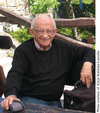issue contents
July 2023 issue

Cover illustration: Interest in so-called bilayer structures has grown since the discovery of strong electronic correlations and superconductivity in twisted bilayer graphene. In this issue, Gratias and Quiquandon [Acta Cryst. (2023), A79, 301–317] investigate the symmetry properties of twisted bilayers. Top left: These two identical cups share the same mirror (the blue frame) and are transformed into each other by another mirror (the red frame) perpendicular to it. Alone, each cup has the point symmetry m, but the pair of cups, taken as a whole, has point symmetry 2mm. Bottom left and right: Applied to homophase bilayer structures, such as two superimposed graphene planes disoriented by a rotation , the newly created mirrors are the elements of the exchange set
whereas the rotations (binary, ternary and hexagonal) belong to the original set of symmetry elements and define the common set
. This space-group composition reconstructs the original hexagonal symmetry as long as the rotation angle generates a coincidence lattice, whatever its size. In their article Gratias and Quiquandon discuss the existence and characterization of such coincidence lattices and induced space-group symmetries for any 2D layer structures.
advances
research papers
 access
access access
accessfoundations
research papers
 access
access access
access access
accesscrystal lattices
short communications
 access
accessobituaries



 journal menu
journal menu





























